2021 Best China Metal Stamping、Laser Cutting、Sheet Metal 、Spinning、Etching And Mold Manufacturer&Supplier,Offering 24/7 Free Custom Expert Metal Stamping Service and Support.
+86 0769 82886112

Custom Metal Drawing Fabrication Services
Metal drawing is a manufacturing process that forms metal work stock by reducing its cross section. This is accomplished by forcing the work through a mold, (die), of smaller cross sectional area than the work. This process is very similar to metal extrusion, the difference being in the application of force. In extrusion the work is pushed through the die opening, where in drawing it is pulled through. The basic concept of metal drawing is illustrated in the following figure.
As a professional metal drawing solution provider, PTJ has more than 10 years of experience. The service types of drawing metal we can make include Drawings processing, Re-Drawings processing, Reverse Drawings and Thinning Drawings processing, Mold Manufacturing etc.
PTJ provides you with a one-stop solution for metal drawing manufacturing lines.Production Range Including Deep drawing,Round drawing, Ellipse drawing, Rectangular drawing,Hill drawing , With flange hemisphere drawing,Flange drawing, Taper drawing,Rectangular redrawing ,Surface forming,Step drawing,Reverse drawing,Ironing,Panel drawing and engineers to help you expand throughout the process. Our engineers have participated in the research of various types of metal drawing process and have served as technical consultants for major peojects manufacturers.
We at PTJ are committed to offering top-notch service to make your metal drawing making process faster and better. We are here to help the industries to keep up with the ongoing innovative drive. We have perfect solutions for you.

Why Choose Custom Metal Drawing Services at PTJ?
- – Capabilities in fabrication, machining and finishing enable us to offer one-stop OEM
- – Metal Drawing fabrication service supplies durable parts for prototype and end-use
- – A wide selection of material and surface metal finishing or treatment processes
- – Accurate dimensions and specifications based on your demands and a variety of instruments
- – Quick free quote within 24 hours and fast turnaround in average one week
- – Competitive prices and the highest standard quality provide the most economic solution
- – No minimum order quality. You can order a prototype of thousands of metal parts
Metal Drawing Material
- – Cold rolled
- – Stainless steel
- – Titanium
- – Monel®
- – Hastelloy®
- – Kovar®
- – Inconel®
- – HY-MU 80
- – Nickel silver
- – Aluminum
- – Brass
- – Copper
- – Nickel materials
- – Handled.
Metal Drawing Capability
ITAF 16949 and ISO 9001:2015 certified custom manufacturer of deep drawn metal stampings.. Shallow drawing services are available.
Battery enclosures, cases, cans, covers, foil gauges, headers and flat and corrugated diaphragms can be manufactured. . Capable of drawing parts from .125 in. to 38 in., length and width, up to 24 in. depth, and up to 1000 tons weight,diameters from .08 in. to 2.5 in. and thickness of .006 in. to .050 in.Available in prototypes to high volume production runs. Assembly, consulting, design, engineering, and finishing services are provided.
Types of Metal Drawing Finishes
If you require special treatment or post-processing for your parts, please check out the following Metal Drawing finishing options. If you can’t find what you want, welcome to send your inquiry to us, a wide range of surface finishes are available at Junying, a fast quote will be offered. Custom materials finish making your Metal Drawing fabricated parts achieve improved appearance and performance.
- – Bead Blast
- – Anodize
- – Plating (Nickel Plating, Silver Plating, etc.)
- – Powder Coating
- – Chromate Conversion Coating
- – Custom finishing services

The List of 16 Kinds Metal Drawing Processes
Table of Contents
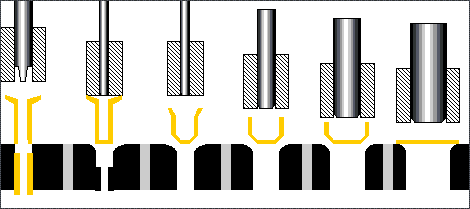
deep drawing forming process
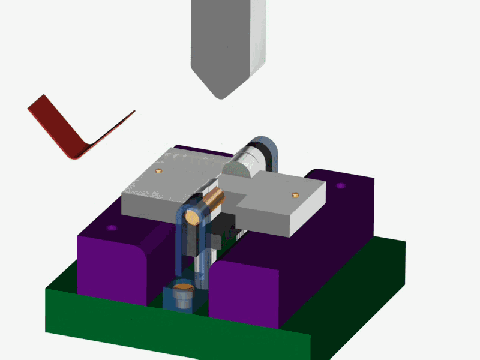
Re-Deep Drawings processing
01 Round drawing
Drawings Forming of cylindrical products with flanges (flanges). The flange and the bottom are both flat, the side wall of the cylinder is axisymmetric, and the deformation is evenly distributed on the same circumference, and the blank on the flange produces deep drawing deformation.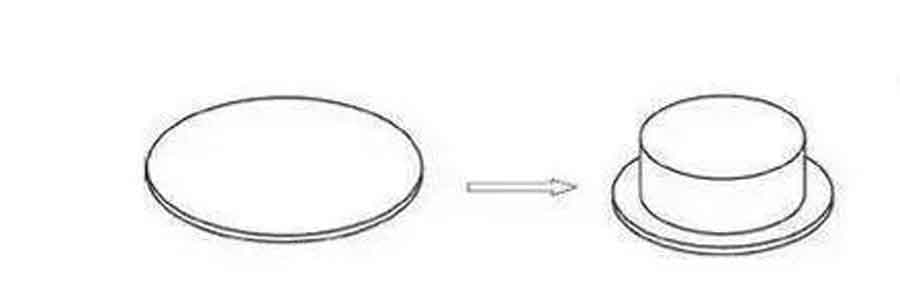
01-Round-drawing
02 Ellipse drawing
The deformation of the blank on the flange is the Drawings Forming deformation, but the amount of deformation and the deformation ratio change accordingly along the contour shape. The larger the curvature, the greater the plastic deformation of the blank; conversely, the smaller the curvature, the smaller the plastic deformation of the blank.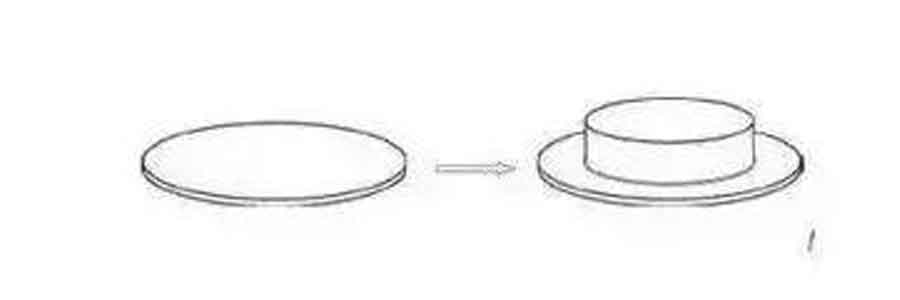
02 Ellipse drawing
03 Rectangular drawing
A low rectangular piece formed by Drawings Forming at one time. When Drawings Forming, the drawings forming resistance at the rounded corners of the flange deformation zone is greater than the drawings forming resistance at the straight edges, and the deformation at the rounded corners is greater than that at the straight edges.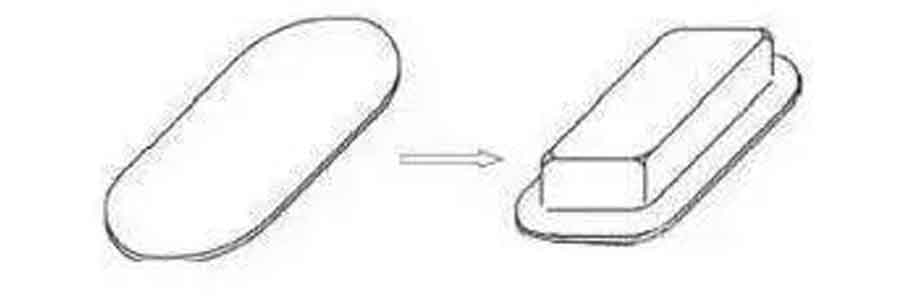
03 Rectangular drawing
04 1-Hill drawing
When the side wall of the stamping part is inclined, the side wall is suspended during the stamping process and is not attached to the mold. The mold is not attached until the end of forming. The deformation characteristics of different parts of the side wall are not completely the same during forming.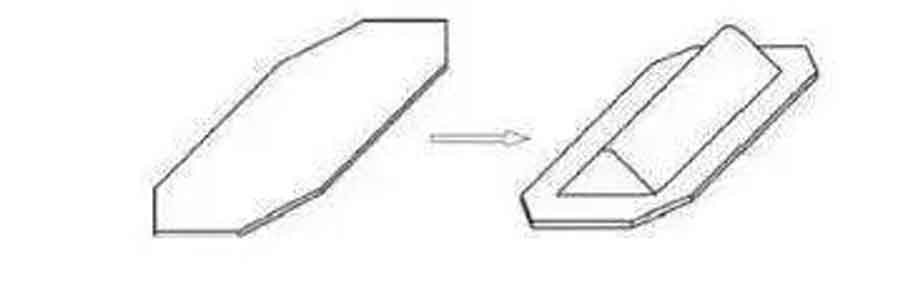
04 Hill drawing
05 2-Hill drawing
The deformation of the blank of the dome-shaped cover plate during the forming process is not a simple Drawings Forming deformation, but a composite forming in which Drawings Forming and bulging deformation exist at the same time. The deformation of the blank on the blanking surface is Drawings Forming deformation (tensile stress in the radial direction and compressive stress in the tangential direction), while the deformation of the blank inside the contour (especially the central area) is bulging deformation (both radial and tangential) Is tensile stress).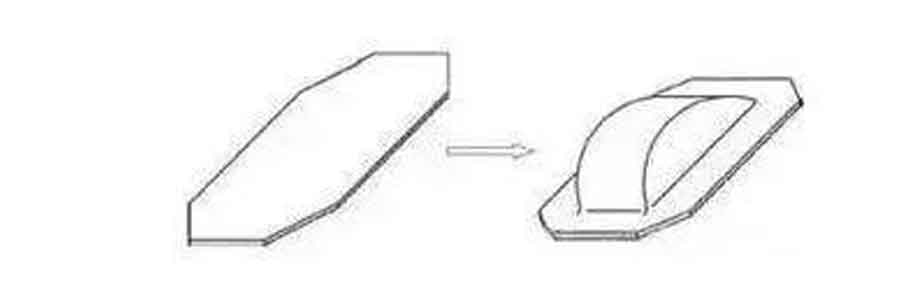
05 Hill drawing
06 With flange hemisphere drawing
When the spherical part is Drawings Forming, the blank is in partial contact with the spherical top of the punch, and most of the rest are in a suspended and unconstrained free state. Therefore, the main process problem of Drawings Forming of this kind of spherical parts is the serious thinning of the local contact part, or the instability and wrinkling of the curved part.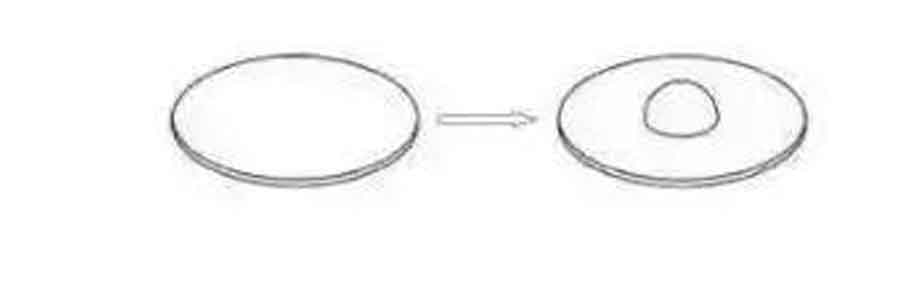
06 With flange hemisphere drawing
07 Flange drawing
Perform shallow Drawings Forming processing on the flange part of Drawings Forming products. The stress and strain situation is similar to compression flanging. Due to the tangential compressive stress, it is easy to wrinkle, so the forming limit is mainly limited by the compression wrinkle.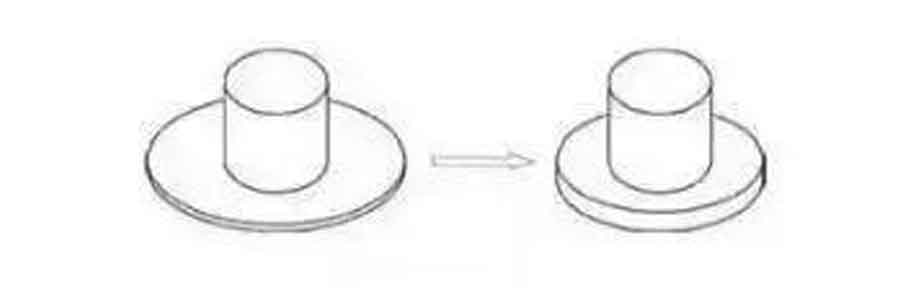
07 Flange drawing
08 Flange drawing
The flange part of the previous Drawings Forming product is processed into an angle shape and then Drawings Forming. This kind of processing requires the material to have good plasticity.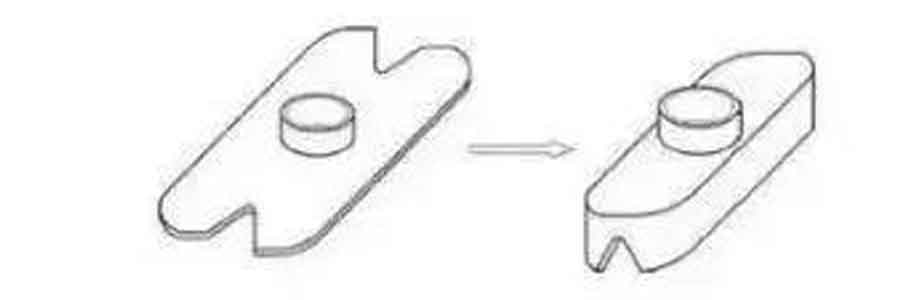
08 Flange drawing
09 Deep drawing
Drawings Forming processing products that exceed the processing limit of Drawings Forming can be completed after more than two Drawings Forming processes. The products processed by Drawings Forming in the depth direction of the front station are processed again in the Drawings Forming direction in the depth direction. For Drawings Forming parts with wide flanges, the required flange diameter will be changed to the required flange diameter during the first Drawings Forming, and the flange diameter will remain unchanged during subsequent Drawings Forming.
09 Deep drawing
10 Taper drawing
For deep taper parts with h/d>0.8 and α=10°~30°, due to the large depth, the deformation of the blank is greater. Only the local area of the blank contacting the punch transfers the forming force, which can easily cause local blanks. Excessive thinning or even rupture requires multiple transitions to gradually take shape. Ladder Drawings Forming method is to first form the blank Drawings Forming into a stepped transition piece, the stepped shape is tangent to the inner shape of the tapered part, and finally a cone is formed. The number of Drawings Forming times and processes of the stepped transition piece are the same as the Drawings Forming of the stepped cylindrical piece.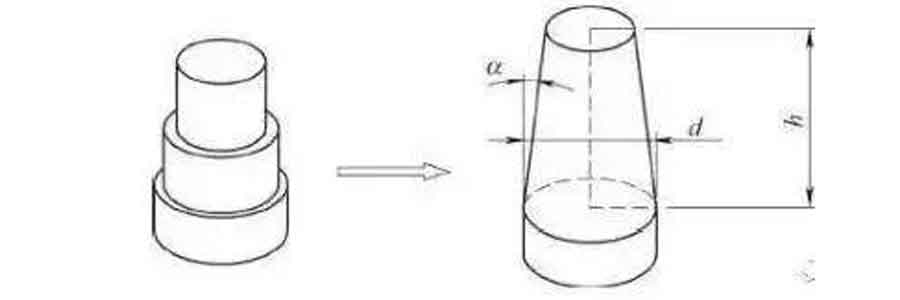
10 Taper drawing
11 Rectangular redrawing
The deformation of the tall rectangular part formed by multiple Drawings Forming is not only different from the Drawings Forming of the deep cylindrical part, but also very different from the deformation of the low box-shaped part. The picture shows that when a multi-station automatic conveying press is used to process high rectangular box parts, the shape and size of the part will change with the height of the Drawings Forming during multiple Drawings Forming processes.
11 Rectangular redrawing
12 Surface forming
Curved Surface Drawings Forming makes the outer flange part of the metal flat blank shrink and the inner flange part elongates, which becomes a stamping forming method for hollow products with non-straight walls and non-flat bottom curved surfaces.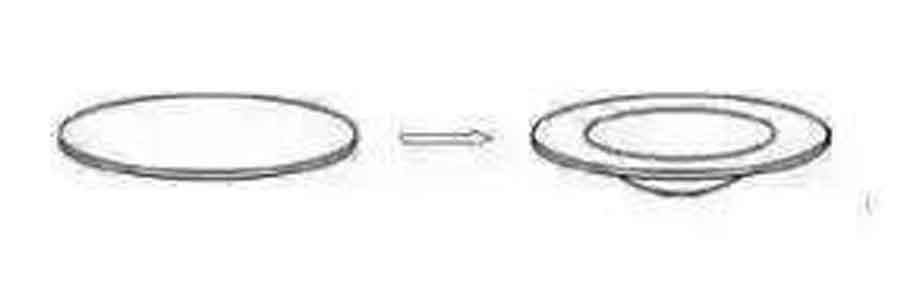
12 Surface forming
13 Step drawing
Re-Drawings Forming is performed on the initial Drawings Forming product on the left to form a stepped bottom on the right. The deeper part is deformed in the early stage of Drawings Forming, and the shallower part is deformed in the later stage of Drawings Forming. The side wall of the step change part is easy to induce shear stress and deform.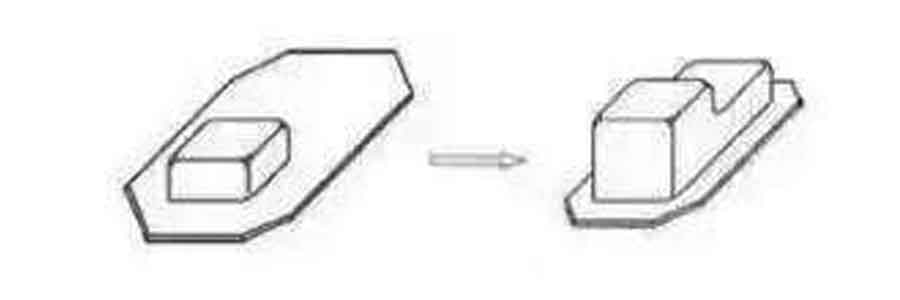
13 Step drawing
14 Reverse drawing
Reverse Drawings Forming is performed on the workpiece processed by Drawings Forming in the previous process, which is a kind of Drawings Forming. The reverse Drawings Forming method can increase the radial tensile stress, and can achieve better results in preventing wrinkles. It is also possible to increase the Drawings Forming coefficient of Drawings Forming.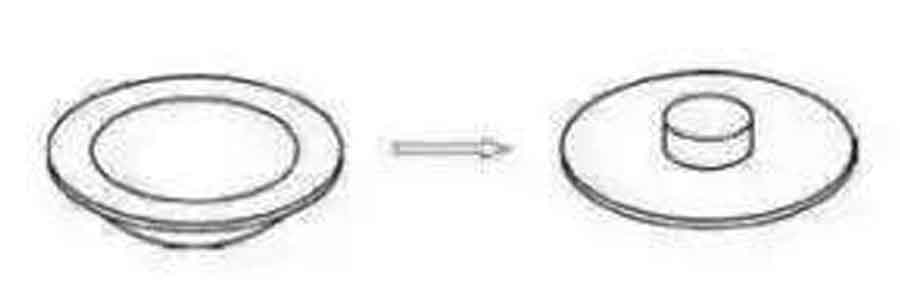
14 Reverse drawing
15 Ironing
Different from ordinary Drawings Forming, thinning of Drawings Forming is mainly to change the thickness of the cylinder wall of Drawings Forming during the process of Drawings Forming. The gap between the convex and concave dies is smaller than the thickness of the blank. When the straight wall part of the blank passes through the gap, it is under a large uniform compressive stress. While the wall thickness becomes thinner during the Drawings Forming process, the wall thickness deviation of the container is eliminated and the surface of the container is increased. Smoothness improves accuracy and strength.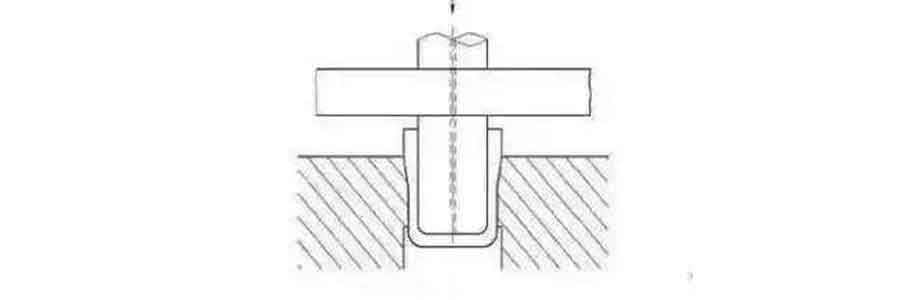
15 Ironing
16 Panel drawing
Panel products are sheet metal stamping parts with complex surface shapes. In the Drawings Forming process, the deformation of the blank is complicated, and its forming properties are no longer simple Drawings Forming forming, but a composite forming with simultaneous deep drawing and bulging.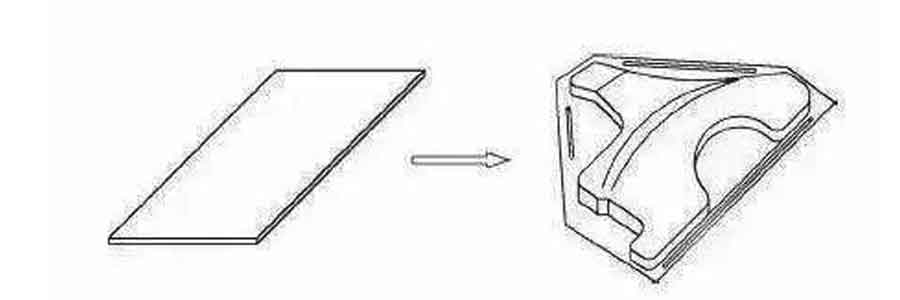
16 Panel drawing
- – Help Project and Partner Custom Stamping Or Other Parts.
- -Provide Excellent Parts Manufacturing services
- -Global delivery as fast as 10 days
- -Machined prototypes in as fast as 1 day.
- -50+metals and plastics ,10+ surfaces finishes
- -Tolerances down to +-0.005mm
- -ISO 9001:2015, ITAF 16949 Certificate
- -500+ machines,50000+ parts export each month
PTJ has over 14 years R&D experience of metal stamping and other fabrication.
We adopt the latest technology to update our technology to save mass production and rapid prototype parts quality for customers.

Click on the picture to view our case studies
PTJ Stamping
- Mobile WhatsApp WeChat:
- +86 8288 6112
- +86 152 1709 1354
- Email: [email protected]
- Address: Dongguan City, Guangdong Province, China.
Copyright 2007-2022 Dongguan PTJ Hardware Products Co., Ltd. All Rights Reserved.
Blog | Products |SiteMap | About Us | Privacy Policy
